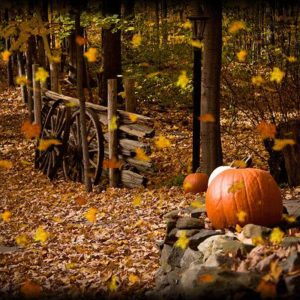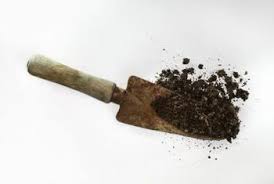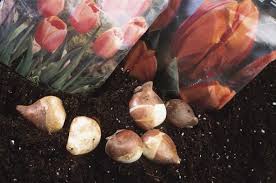The shorter and cooler days of October make for perfect weather to plant most trees and shrubs.

While no growth above ground will progress late in the growing season, all the action is below ground in the form of root growth. With top growth largely shut down in woody plants, roots grow in a flurry into the surrounding soil until soil temperatures drop below 40º F which usually occurs around Thanksgiving. The fall root growth has a tendency to establish plants before the coming winter and will result in an explosion of top growth in the spring.
As for bare root trees and shrubs, fall planting in the north is not a good idea as the freeze and thaw of the soil results in plants being heaved out of the ground by early spring.
When performing fall planting, some soil amendments to the back-fill soil is important; however, the size of the planting hole is even more important as experiments have shown at Ohio State University. A planting hole typically twice the size of the root ball is adequate but even larger is better.
As far as soil amendments, Canadian sphagnum peat moss, compost or Sweet Peet can be used as concentrated in a ratio of 1:2 of the amendment to ordinary soil.
In the case of ericaceous plants such as blueberries, rhododendrons, azaleas and their relatives, Canadian sphagnum with its acidic nature of a 3.6-3.9 ph will result in a final ph of 5-6 when mixed with soils here in northeast Ohio. This acidic mixture will then unlock iron from the soil which is an essential micro-nutrient for these plants at a ratio of 1:1 of peat moss to soil.
Another fall chore is the planting of spring flowering bulbs such as tulips, hyacinth, narcissus and crocus. These flower bulbs planted in October will immediately begin to grow roots and later in fall will undergo a metamorphosis that requires a minimum of 12-13 weeks of soil temperatures of 40º F or below. This “incubation” period is necessary to foster a chemical change in the flower bulb so that growth, and later on flowers are able to emerge in the spring.
 While October is not the only month suitable to plant spring flowering bulbs, after-October plantings can occur as long as a shovel or bulb planter can be pushed into the ground in unfrozen soil. After February 15th though, time runs out in northern Ohio to achieve the required incubation period before soils warm in the spring. Flower bulbs left on the shelf until spring are therefore not worth planting.
While October is not the only month suitable to plant spring flowering bulbs, after-October plantings can occur as long as a shovel or bulb planter can be pushed into the ground in unfrozen soil. After February 15th though, time runs out in northern Ohio to achieve the required incubation period before soils warm in the spring. Flower bulbs left on the shelf until spring are therefore not worth planting.
In the lawn, over seeding and repair to bare spots are still possible although depending on the weather, newly sown grass seed may not germinate until spring. Actually slow-to-germinate seed will germinate better in spring when fall sowed as all winter long the seed imbibes moisture and the freeze-thaw cycle will help to work the seed into the soil. A word of warning though with spring germinating grass seed is that if a crabgrass preventer is put down in April it must only contain a product with the active ingredient of Siduron that “knows” the difference between germinating crabgrass and lawn grass.
Fall planting as it pertains to trees, shrubs and flower bulbs works well and saves some much needed time in the spring planting season.